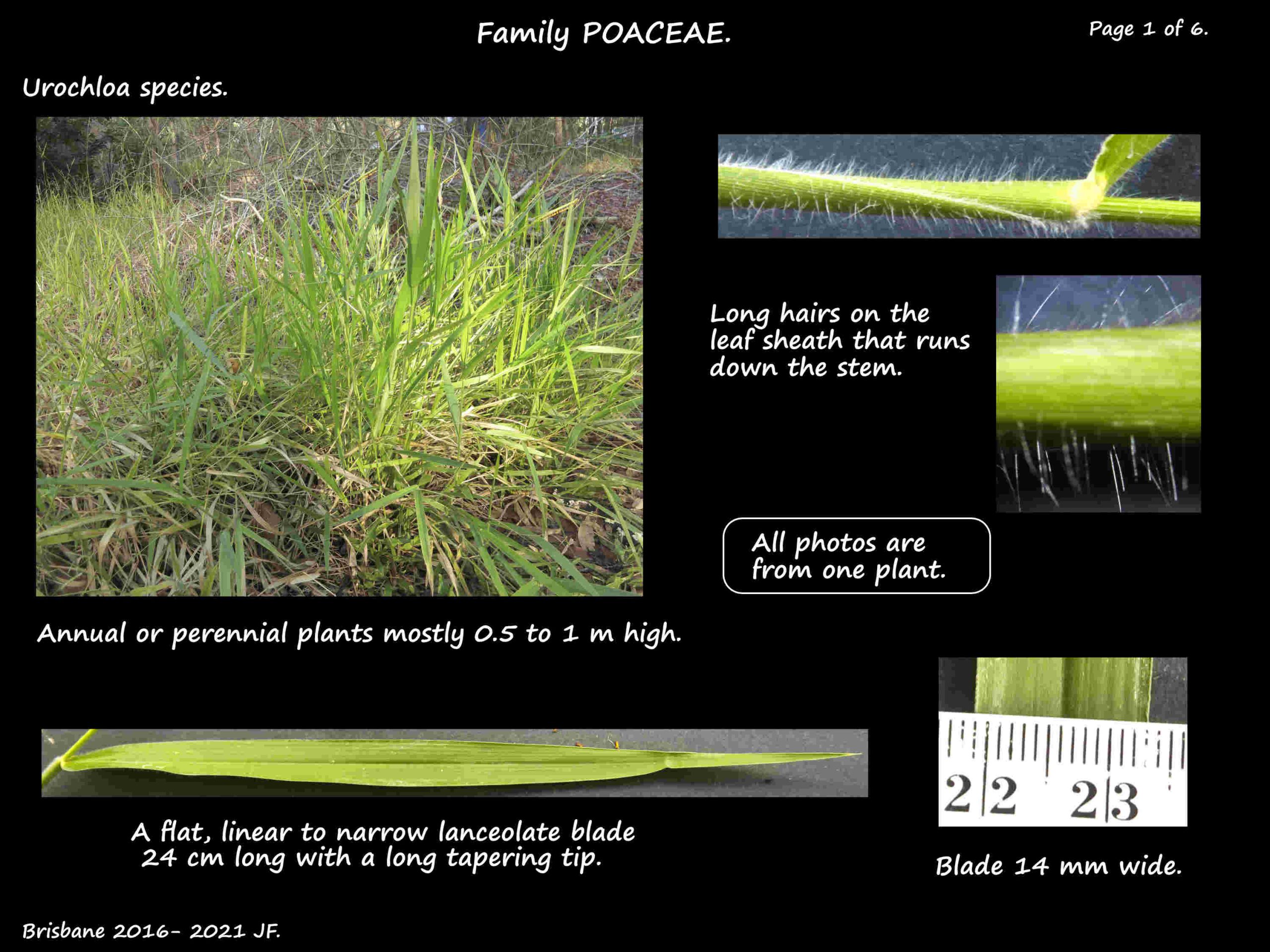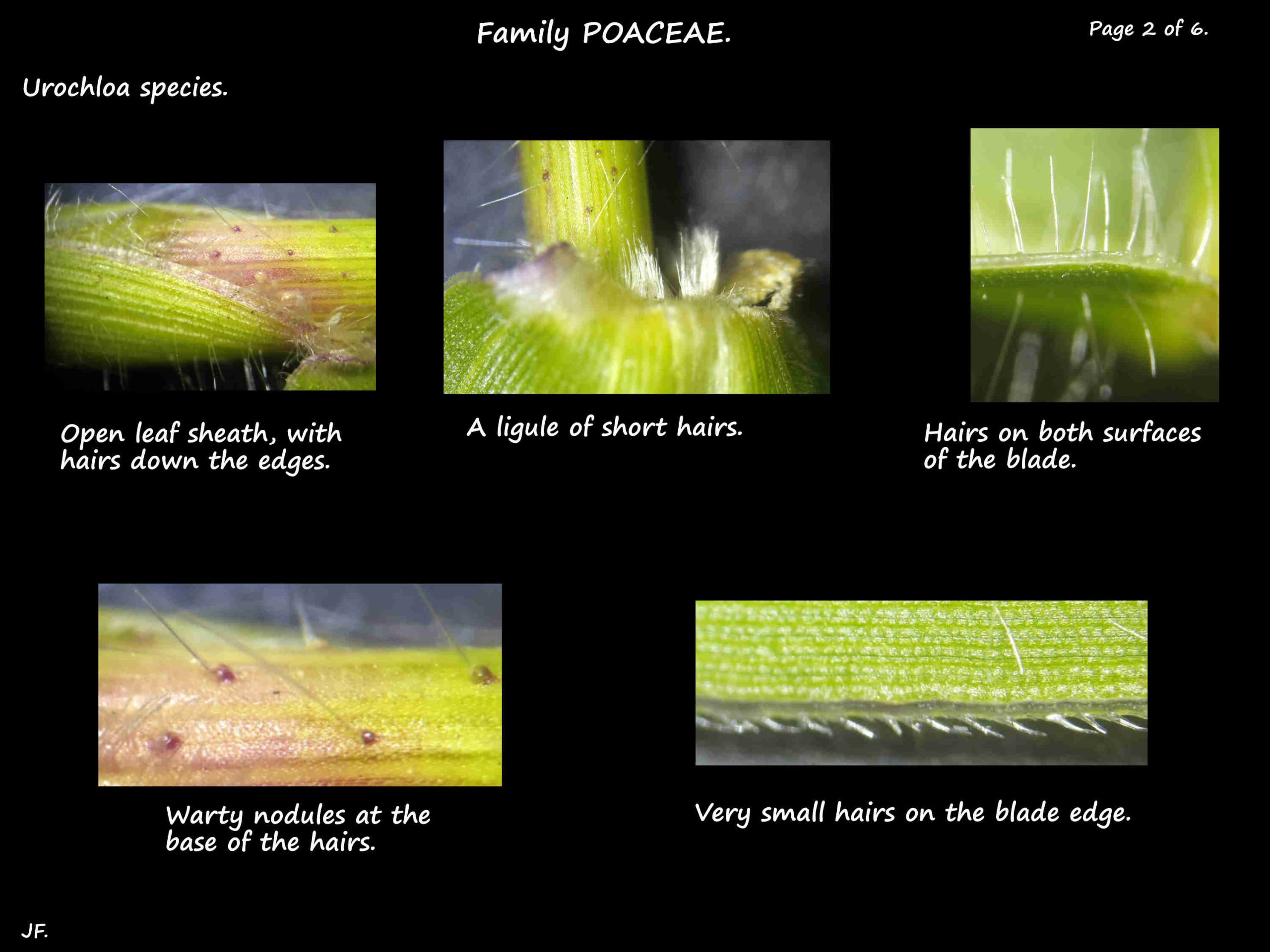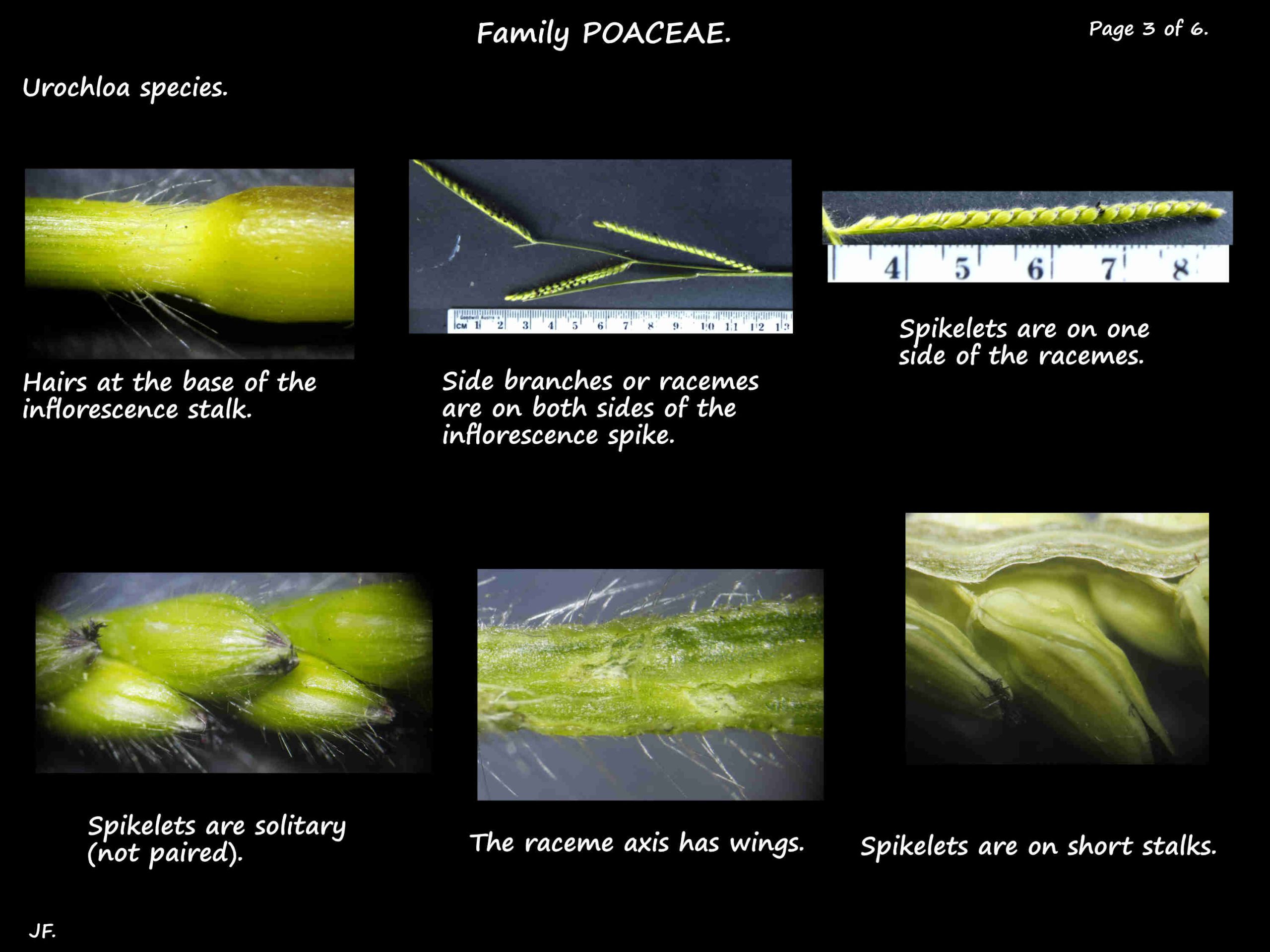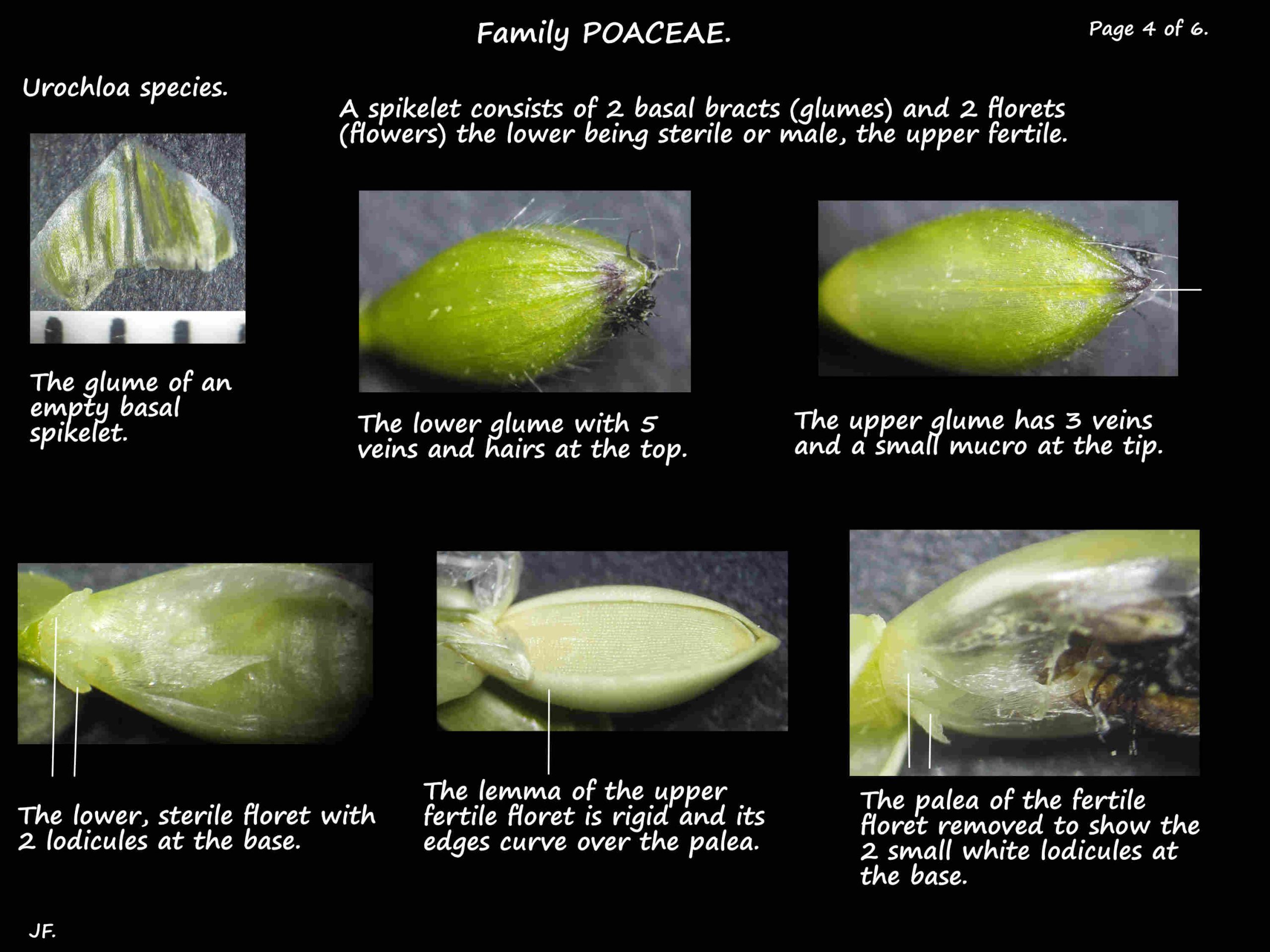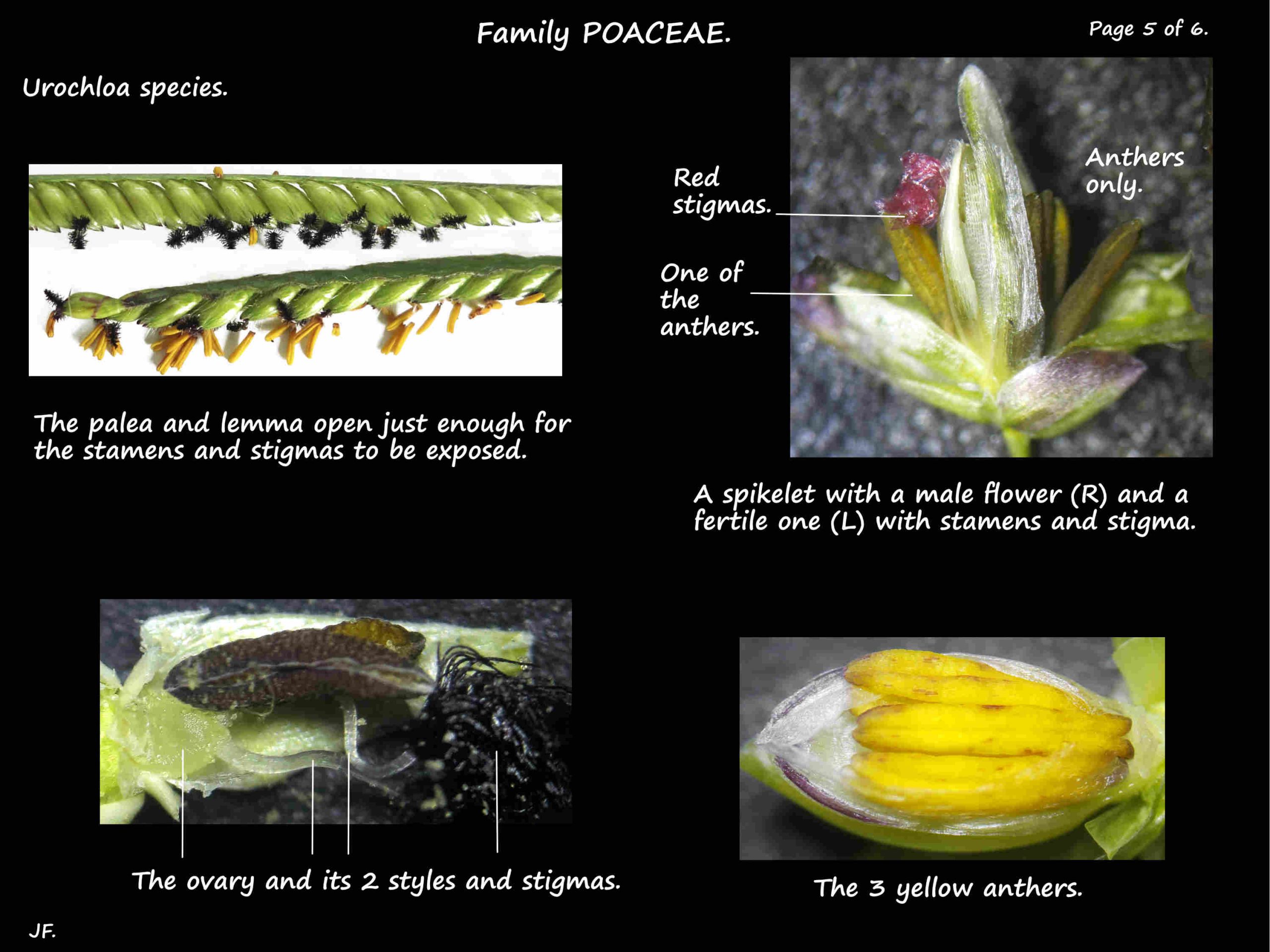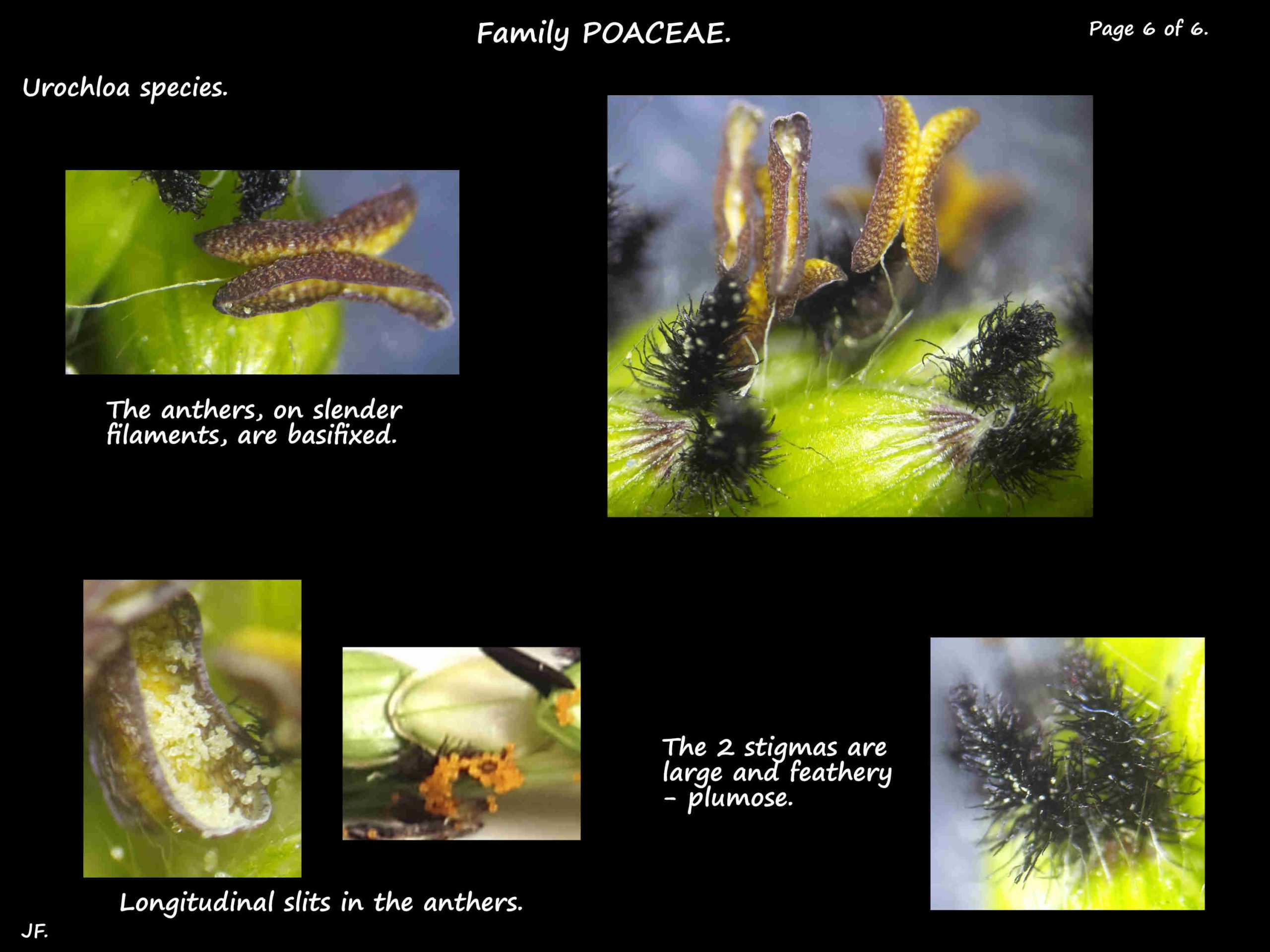Urochloa genus & Signal grass.
Urochloa, in Family Poaceae, has around 100 species.
Australia has some native species and 10 or 11 that are naturalised.
Urochloa decumbens is well known as Signal grass but other species also have this common name.
For example Urochloa subquadripara is Signal grass, Urochloa oligotricha is Perennial signal grass,
Urochloa ruziziensis is Congo signal grass, Urochloa mosambicensis is Bushveld signal grass,
Urochloa brizantha is Palisade signal grass, Urochloa fusca is Browntop signal grass and
Urochloa panicoides is Annual or Garden signal grass.
Signal grass is also seen as a common name in other genera e.g. Moorochloa eruciformis is Sweet signal grass.
Urochloa species are annual or perennial herbs usually 0.5 to 1 m high but some are up to 2 m.
They can form thick clumps or spread sideways by stolons rooting at their nodes.
The green or sometimes red stems can be erect, arched or prostrate.
The alternate leaves have a blade, sheath and a ligule.
The narrow blades, with a tip tapering to a point, are mostly up to 25 cm long and 2 cm wide.
A few species have blades that can be 80 to 100 cms long.
There may be hairs on the blade and on the edge.
There are often small warty tubercles at the base of the hairs on the blade and sheath.
The sheath, with open edges, runs down the stem and can be hairy or hairless.
The ligule at the junction of the blade and sheath can be a membrane with hairs on the edge or a row of
long or short hairs.
The axis of the inflorescence spike can be up to 25 cm long and may be winged.
It can have 2 to 20 side branches or racemes.
The side branches can be on one or both sides of the main axis or all around it.
The side branches occasionally branch forming a panicle.
The top of the stem may or may not extend past the last raceme.
There are often hairs on the main axis and the side branches.
The 2 to 8 cm long racemes have small, oval spikelets.
These can be arranged in 1, 2 or 4 rows or irregularly around the stalk.
Spikelets, on short stalks, are around 4 to 6 mm long and often hairy.
They may be in single units or pairs or irregularly arranged.
A spikelet has 2 green or purple tinted bracts or glumes and 2 flowers or florets.
The glumes may be similar or unequal and minute to equal to the length of the spike.
The upper one can be on the side towards or away from the main axis.
They are membranous and have up to 11 longitudinal darker green veins.
The upper and lower glumes have a different number of veins.
The glumes may be smooth, have hairs near the tip or all over.
Each of the florets has 2 green or white bracts that are almost always hardened and more rigid than the glumes.
The lower bract is the lemma which may have a mucro or awn at the tip.
The slightly shorter upper bract is the palea and the edges of the lemma curve tightly over it.
The palea is occasionally absent.
Hairs may be present or absent on both and the number of veins varies.
The lower lemma of the sterile floret may be membranous.
Inside the lemma and palea are the 2 small lodicules.
The lower floret is male with just 3 stamens or is sterile.
The upper, fertile floret is bisexual with 3 stamens and an ovary which has two long, feathery stigmas.
As the fertile florets mature they become a pale green or brown.
The seed or grain remains in the spikelet which falls off.
J.F.
